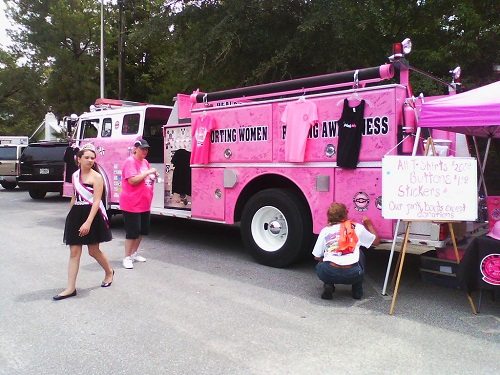
October 27, 2013; Psychology Today
Ah, October. It’s time for the leaves to turn colors, the kids to carve pumpkins, and, of course, it’s time to eat pink bagels. Yes, you read that correctly. October is Breast Cancer Awareness Month, and as you’ve probably noticed, stores of all types are awash in pink products—even pink bagels.
Popularized in the late 1990s and early 2000s, cause marketing is under the broader corporate social responsibility umbrella, which includes corporate giving, strategic corporate philanthropy, checkout charity campaigns, and the emerging social businesses. Cause marketing is expected to climb to $1.78 billion in 2013, an increase of 4.8 percent over 2012. But if you’re wondering where the money goes, you’re not alone. Gayle A. Sulik, Ph.D. and many others are asking just how much actually reaches the nonprofit organization.
Sulnik points out that companies engaged in cause marketing have “three primary objectives: (1) build a reputation as a good corporate citizen, (2) deepen employee loyalty through employee matching and cause related volunteerism, and (3) increase sales.” The bottom line in cause marketing is, in fact, the company’s bottom line: profits. To this end, she indicates it would be wise for companies to partner with nonprofits that have a strong organizational infrastructure and a mission with a direct emotional appeal. For example, the majority of funds from checkout charity campaigns go to charities that are easy to relate to, such as large children’s health charities (like St. Jude’s Children’s Hospital), and to nonprofits working on other health-related concerns, such as autism, breast cancer, or muscular dystrophy.
Sign up for our free newsletters
Subscribe to NPQ's newsletters to have our top stories delivered directly to your inbox.
By signing up, you agree to our privacy policy and terms of use, and to receive messages from NPQ and our partners.
If you’ve eaten a pink bagel this month, you are not alone. The breast cancer brand has become so ubiquitous it is akin to a guaranteed home run for cause marketing campaign managers. As Sulik wrote earlier this year, “The brand encourages people to buy and display pink in the name of increased awareness, improvement in women’s lives, faith in medical science, and hope for a future without breast cancer. The brand capitalizes on emotional responses related to fear of the disease, hope for a cure, and the goodness of the cause.” Talk about a brand filled with promise!
The big question is, who really benefits from cause marketing? It is difficult to get at the exact figures, but Sulik offers some interesting facts to consider:
| Company – year, campaign | Benefits to Charity | Benefits to Company |
| Yoplait Yogurt of General Mills – 2008, pink lid campaign |
|
|
| Ford Motor Company – 2008, Warriors in Pink |
|
|
| National Football League – 2009, A Crucial Catch Campaign |
|
|
Many might look at these figures and think, “Hey, this is pretty good for the charity!” The nonprofit gains both public awareness and funds to support its programs. This is true; however, cause marketing may be doing more harm than good. Some studies indicate that consumers who purchase items related to cause marketing give less to charity directly.
Well-known scholar Angela Eikenberry has argued that cause marketing, which she labels “consumption philanthropy,” can have disastrous consequences. She argues, “Consumption philanthropy individualizes solutions to collective social problems, distracting our attention and resources away from the neediest causes, the most effective interventions, and the act of critical questioning itself. It devalues the moral core of philanthropy by making virtuous action easy and thoughtless. And it obscures the links between markets—their firms, products, and services—and the negative impacts they can have on human wellbeing. For these reasons, consumption philanthropy compromises the potential for charity to better society.”
The bottom line, as Sulik writes, is that “Cause marketing is not philanthropy.” It is marketing—in pink.—Jennifer Amanda Jones











